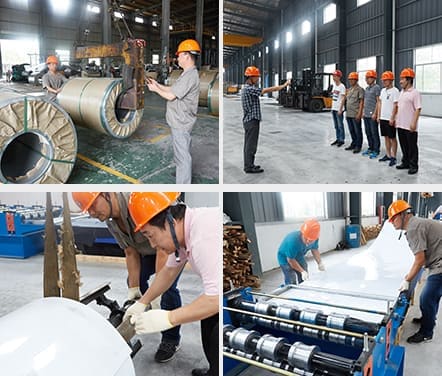- no.8,zaolin road,
longxiang street,
tongxiang,zhejiang,china - +86 573 89381086[email protected]
- DownloadsPDF Brochures
Third, the selection of self-tapping screws. When selecting the fixing screw, you should choose the fixing part according to the service life of the structure, and pay special attention to whether the life of the covering material is consistent with the specified fixing part life. At the same time, note that the thickness of the steel purlin cannot exceed the self-drilling ability of the screw. Screws are currently available with plastic heads, stainless steel caps or coated with a special durable coating. In addition, in addition to the screws for fixing the concealed buckle, all other screws are provided with waterproof washers, and corresponding special washers are provided for the lighting plate and special wind pressure. Fourth, the installation of color plates is easier to master, and some details are more important. For coloring boards for roofing, the corresponding coloring work should be done on the roof and eaves. The purpose is to more effectively prevent rainwater from entering the roof. Where the roof outer panel is on the roof ridge, the chassis located between the steel plate's terminal ribs can be folded upwards using the edge-retracting tool. It is used at the upper end of all roof steel plates with a slope below 1/2 (250) to ensure that water blown in by the wind under the flooding plate or cover plate will not flow into the building.
The edge-retracting operation can be performed before the steel plate is positioned, or after the steel plate is installed, but the latter method needs to leave enough clearance (about 50mm) at the top of the steel plate to facilitate the operation of the edge-retracting tool. The specific operation method is: place the edge-receiving tool on the steel plate terminal chassis, and slide the tool on the steel plate as soon as possible, as far as possible. Hold the steel plate terminal with a tool, and fold the chassis upwards by about 800. As described above, bend each chassis. When the board is used on a roof with a slope of less than 1/5 (100), the end of the chassis at the lower end of the steel plate should be bent slightly downward (lip-shaped), which can be achieved with the same edge-retracting tool, which can ensure that the rain runs The end of the steel plate is discharged and will not return to the lower side of the flat chassis due to capillary or wind.
The operation of folding down must be performed after the roof steel plate is fixed, otherwise this operation will be hindered. When lowering the edge of the folding plate, open the mouth of the pry tool properly, clamp the tool to the end of the chassis, and push as far as possible. The tool is firmly attached to the end of the chassis, and the handle is shaken about 200 at the same time, so that a downward folded edge is formed at the end of the steel plate.
For very long roof steel plates, telescopic joints should be provided, and the distance should not be greater than the data listed in the table below to overcome longitudinal thermal displacement. For the penetrating fixed type, only one penetrating fixed overlap can be set between two telescopic nodes.


With high anti-rust performance, they are popular used in co...

PPGI / PPGL COIL full name is prepainted galvanized / galval...

Port:Zhejiang,China Advantages of Our Prepainted Galvanized ...

APPLICATION OF PPGI Construction:Outside:Workshop, agricultu...

